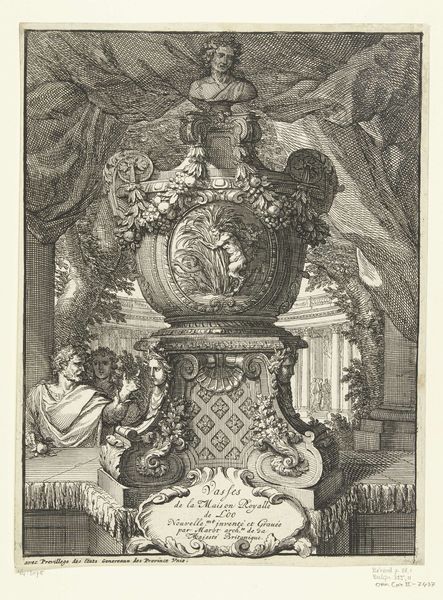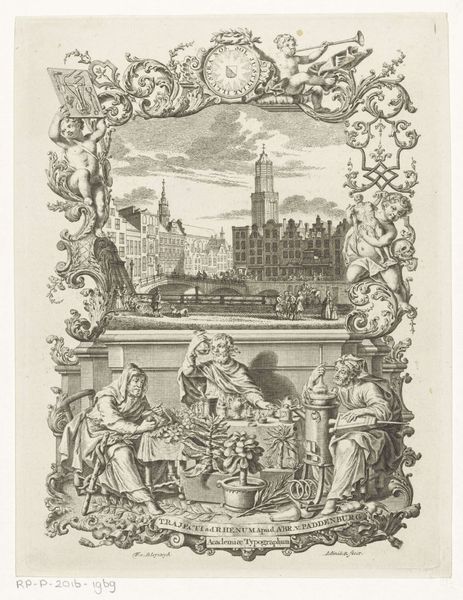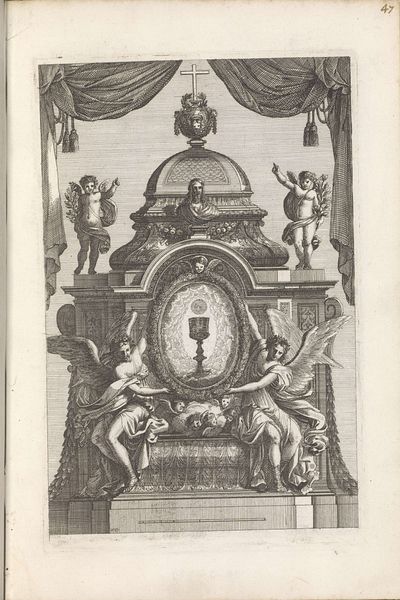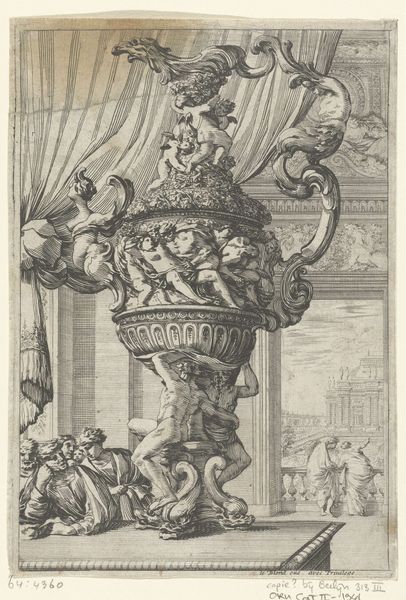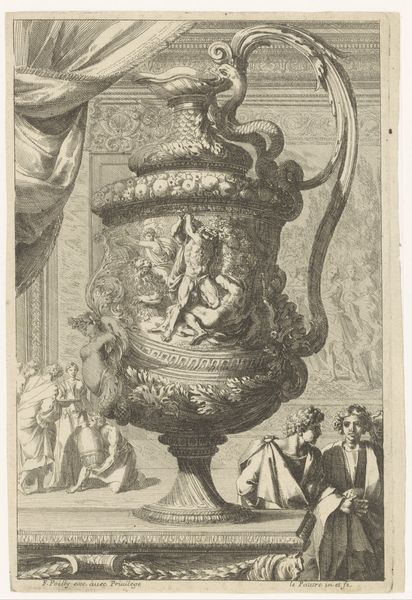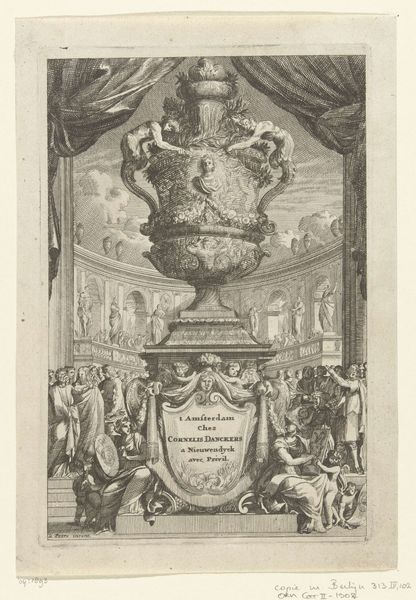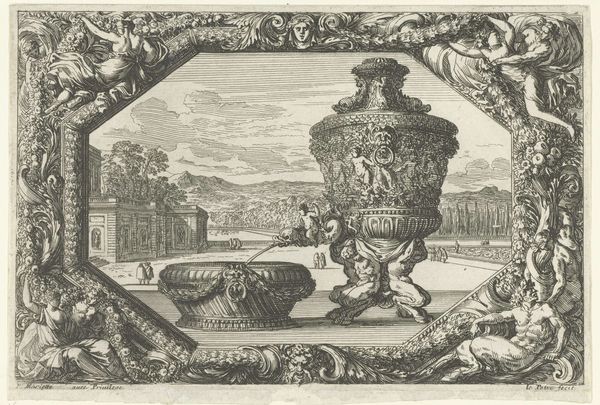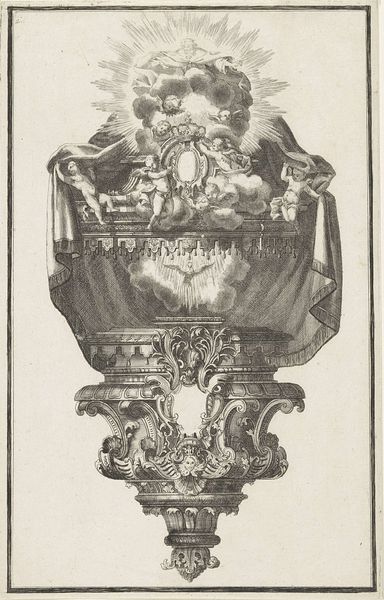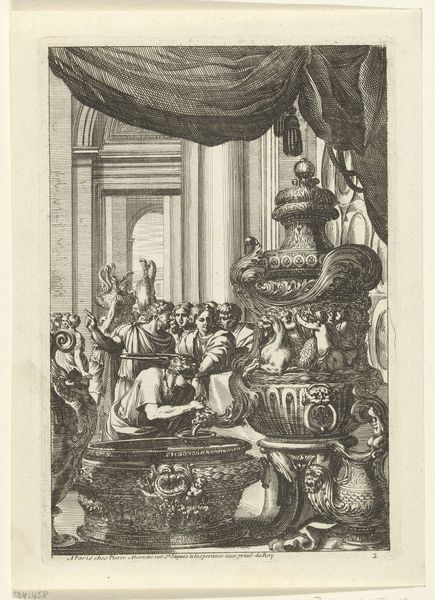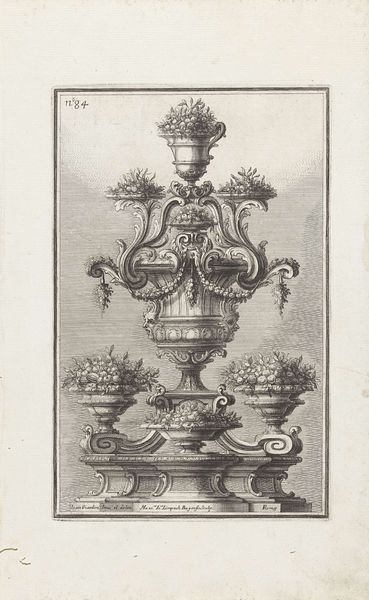
print, engraving
#
baroque
#
pen drawing
# print
#
line
#
history-painting
#
engraving
Dimensions: height 230 mm, width 158 mm
Copyright: Rijks Museum: Open Domain
Curator: Standing before us is the print "Titelblad: Vazen en schenkkannen," or Title Page: Vases and Pitchers, made between 1669 and 1693, attributed to Jean Lepautre. It's currently housed here at the Rijksmuseum. Editor: My initial impression is one of elaborate density. The eye is immediately drawn to the enormous vase, but then you notice the incredibly detailed landscape and the mythological figures that frame the composition. Curator: Lepautre, working in the Baroque style, often reflected the opulence and grandeur of the French court. His works reveal much about the cultural obsession with display and the assertion of power, often visualized through idealized forms of classical antiquity. The inclusion of what appears to be a female portrait on the central medallion underscores this connection to power and status. Editor: Absolutely, and from a formal standpoint, look at the masterful use of line! The engraver's skill is evident in the incredibly fine details – the textures, the shading, even the way light seems to play across the surface of the vase and within the foliage. It creates a wonderful tension between flat plane and spatial illusion. Note, too, the use of symmetry, establishing a perfect, balanced composition, grounding that immense vase within the landscape. Curator: What interests me particularly is how prints like these circulated. They served as visual propaganda and promoted French artistic innovation throughout Europe. This print underscores France’s claims to cultural dominance under Louis XIV, even promoting specific artisans. Consider the engraved text itself: “A Paris… chez F. Poilly… avec privil du Roy”. Editor: Yes, and that inscription becomes integral to the overall design. It balances the visual weight of the figures on either side, essentially becoming another architectural element. Curator: Looking at the historical context helps reveal the socio-political message of luxury, aspiration, and absolutist power this print intended to broadcast. Editor: And closely analyzing Lepautre’s formal techniques gives insights into his visual strategy to render surface textures to simulate weight and the solidity. Together these factors allow us a better insight to not only Baroque artwork in general but to our own means of interpretation.
Comments
No comments
Be the first to comment and join the conversation on the ultimate creative platform.
